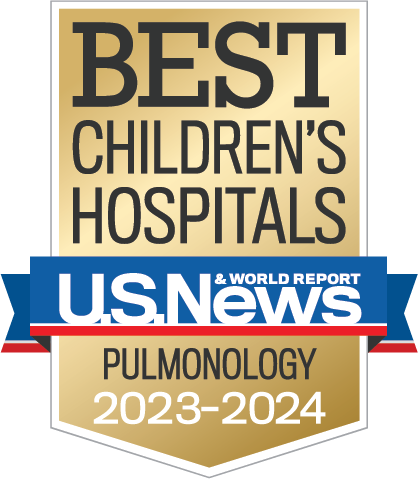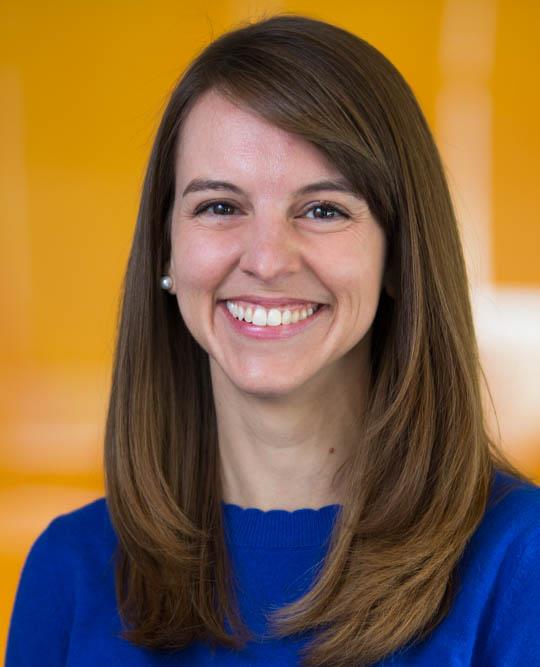- Doctors & Departments
-
Conditions & Advice
- Overview
- Conditions and Symptoms
- Symptom Checker
- Parent Resources
- The Connection Journey
- Calm A Crying Baby
- Sports Articles
- Dosage Tables
- Baby Guide
-
Your Visit
- Overview
- Prepare for Your Visit
- Your Overnight Stay
- Send a Cheer Card
- Family and Patient Resources
- Patient Cost Estimate
- Insurance and Financial Resources
- Online Bill Pay
- Medical Records
- Policies and Procedures
- We Ask Because We Care
Click to find the locations nearest youFind locations by region
See all locations -
Community
- Overview
- Addressing the Youth Mental Health Crisis
- Calendar of Events
- Child Health Advocacy
- Community Health
- Community Partners
- Corporate Relations
- Global Health
- Patient Advocacy
- Patient Stories
- Pediatric Affiliations
- Support Children’s Colorado
- Specialty Outreach Clinics
Your Support Matters
Upcoming Events
Mental Health Town Hall
Tuesday, April 23, 2024Join Children’s Hospital Colorado pediatric experts for a virtual...
-
Research & Innovation
- Overview
- Clinical Trials
- Q: Pediatric Health Advances
- Discoveries and Milestones
- Training and Internships
- Academic Affiliation
- Investigator Resources
- Funding Opportunities
- Center For Innovation
- Support Our Research
- Research Areas

It starts with a Q:
For the latest cutting-edge research, innovative collaborations and remarkable discoveries in child health, read stories from across all our areas of study in Q: Advances and Answers in Pediatric Health.


Ventilator Care Program
Neonatal Bronchopulmonary Dysplasia (BPD)
We treat kids like they should be treated: like kids. That’s why we designed our hospital just for them.

What is bronchopulmonary dysplasia (BPD)?
Bronchopulmonary dysplasia (BPD) is a chronic lung disease that affects infants. BPD is usually seen in premature babies who were born early with underdeveloped lungs and received mechanical ventilation and oxygen after birth. Babies with BPD have chronic respiratory failure, need oxygen and have abnormal chest X-rays.
BPD often results in long-term breathing problems such as asthma, exercise limitations, a need for supplemental oxygen and more severe stress on the heart and lungs. Although some infants recover from BPD, others have long-term health problems as a result and many require intensive medical care.
Along with asthma and cystic fibrosis, bronchopulmonary dysplasia is one of the most common chronic lung diseases in children. According to the National Heart, Lung and Blood Institute (NHLBI), between 5,000 and 10,000 cases of BPD occur every year in the United States.
What causes bronchopulmonary dysplasia?
Children are not born with BPD. The condition develops as a result of premature birth and progressive lung injury after birth, caused when babies need help breathing.
Most BPD cases occur in premature infants, usually born at 34 weeks' gestation or before, who weigh less than 4.5 pounds. These babies are more likely to be affected by infant respiratory distress syndrome (RDS), also called hyaline membrane disease, at birth.
The lungs of babies with RDS are too immature to allow them to breathe on their own, so mechanical ventilators breathe for them. Although the ventilator is life-saving, it can contribute to long-term breathing problems.
Over time, pressure from the ventilator and increased oxygen intake can injure a newborn's delicate lungs. Almost half of all extremely low birth weight infants will develop some form of lung injury. If symptoms persist at 36 weeks post-conception, a diagnosis of BPD is made. As babies mature, they grow more lung tissue, which can improve their breathing.
BPD also can develop from other injuries to a newborn's fragile lungs such as trauma, pneumonia and other infections. All of these can contribute to the inflammation and scarring associated with BPD, even in a full-term newborn.
Who gets bronchopulmonary dysplasia?
Bronchopulmonary dysplasia (BPD) occurs in different infants for different reasons. It can happen in full-term as well as premature infants, and doctors believe that it's due to an individual infant's response to a number of possible factors. The more premature a baby is at birth, the greater the chance of developing BPD.
Children with extremely low birth weight (less than 2.2 pounds) are most at risk for developing BPD. Among babies who are premature and have a low birth weight, white male infants seem to have the greatest risk of developing BPD, for unknown reasons. Genetics may contribute to some cases of BPD as well.
What are the signs and symptoms of bronchopulmonary dysplasia?
Bronchopulmonary dysplasia is diagnosed while a baby is still in the hospital. However, once a baby comes home, parents still need to watch for signs when a child has serious trouble breathing, respiratory distress or BPD-related emergencies. Signs that an infant might need immediate care include:
- Faster breathing than normal
- Working much harder than usual to breathe (belly sinking in with breathing, pulling in of the skin between the ribs with each breath)
- Growing tired or lethargic from working to breathe
- More coughing than usual
- Panting or grunting
- Wheezing
- Pale, dusky or blue skin color that may start around the lips or nail beds
- Trouble feeding or excess spitting up or vomiting after feedings
If you notice any of these symptoms in your child, call your doctor or seek emergency medical attention right away.
What tests are used to diagnose bronchopulmonary dysplasia?
Chest X-rays may be helpful in making the diagnosis. In babies with respiratory distress syndrome (RDS), the X-rays may show lungs that look like ground glass. In babies with BPD, the X-rays may show lungs that appear spongy.
How do providers at Children's Hospital Colorado make a diagnosis?
Doctors usually don't diagnose BPD until at least four weeks into the infant's life. At that point, the doctors make a diagnosis based on whether there was lung damage or an injury at birth, and whether the infant has needed extra oxygen for a prolonged period of time (or past 36 weeks of age). Chest X-rays can also help determine the extent of the lung damage.
How is bronchopulmonary dysplasia treated?
Although there is no cure for BPD, doctors have many tools to help support the breathing and oxygen needs of infants with BPD, and to enable them to grow and thrive.
Babies first diagnosed with BPD receive intense supportive care in the hospital, usually in the neonatal intensive care unit (NICU) until they are able to breathe well enough on their own without the support of a mechanical ventilator.
Infants with BPD are also treated with different kinds of medications that help to support their lung function. These include:
- Bronchodilators (such as albuterol) to help keep the airways open
- Diuretics (such as furosemide) to reduce fluid buildup in the lungs
- Short courses of steroids maybe used in severe cases of BPD
- Antibiotics are sometimes needed to fight bacterial infections because babies with BPD are more likely to develop pneumonia.
- Surfactant is a natural lubricant that improves breathing function. Babies with respiratory distress syndrome (RDS) who have not yet been diagnosed with BPD may not produce enough surfactant on their own, so giving them surfactant may reduce the chance that BPD develops.
Babies sick enough to be hospitalized with BPD may need feedings of high-calorie formula through a gastric tube inserted into the stomach to ensure they get enough calories and nutrients and start to grow.
In severe cases, babies with BPD cannot use their gastrointestinal systems to digest food. These babies require intravenous (IV) feedings – called TPN, or total parenteral nutrition – made up of fats, proteins, sugars and nutrients. These are given through a small tube inserted into a large vein through the baby's skin.
How long do babies with BPD stay in the hospital?
Infants with BPD can stay in the NICU for several weeks to a few months. The average length of stay is 120 days, according to the National Institutes of Health. Even after leaving the hospital, a baby might require continued medication, breathing treatments or even oxygen at home.
Most children are weaned from supplemental oxygen by the end of their first year, but a few with serious cases may need a ventilator for several years or, sometimes, their entire lives (although this is rare). When long-term ventilation is needed, a tracheostomy tube (a tube placed by surgery that passes through the skin into the windpipe below the vocal cords) may be discussed. While this is a great option for some patients, many families decide not to pursue this for reasons centered on their child's quality of life.
Improvement for any baby with BPD is gradual. Some infants will be slow to improve; others may not recover from the condition if their lung disease is very severe. Lungs continue to grow for 5 to 7 years, but there can be subtle abnormal lung function even at school age in some cases. Many babies diagnosed with BPD will recover close to normal lung function, but this takes time.
What are home care guidelines for children with BPD?
Parents play a critical role in caring for an infant with BPD. The following tips will help maximize your child’s treatment and healing:
- Reduce your child's exposure to potential respiratory infections by limiting visits from sick people.
- If your child needs daycare, pick a small center where there will be less exposure to germs.
- Make sure your child receives all recommended vaccinations, including a flu shot each year.
- Keep your child away from tobacco smoke, particularly in your home. It is a serious respiratory irritant.
Why choose Children's Colorado for your child's bronchopulmonary dysplasia?
Our interdisciplinary Ventilator Care Program offers key features that are required for the successful care of children who require chronic ventilation. We facilitate a smooth transition between inpatient and outpatient care. Our Program consists of a team of providers with the experience and focused interest in providing the highest quality of care to children and their families. Key aspects include training, research, education, patient advocacy and the development of clinical care guidelines using quality improvement approaches.
- Medline Plus provides easy-to-understand information based on the latest medical research with links to pictures, related topics and other trusted sources.
- The National Heart, Lung and Blood Institute provides information about the latest BPD research across the United States.
Next steps
-
Would you like to learn more about us?
Learn more about the Ventilator Care Program -
Do you have questions about your child’s condition?
720-777-6181 -
Are you ready to schedule an appointment?
Schedule an appointment



 720-777-0123
720-777-0123







